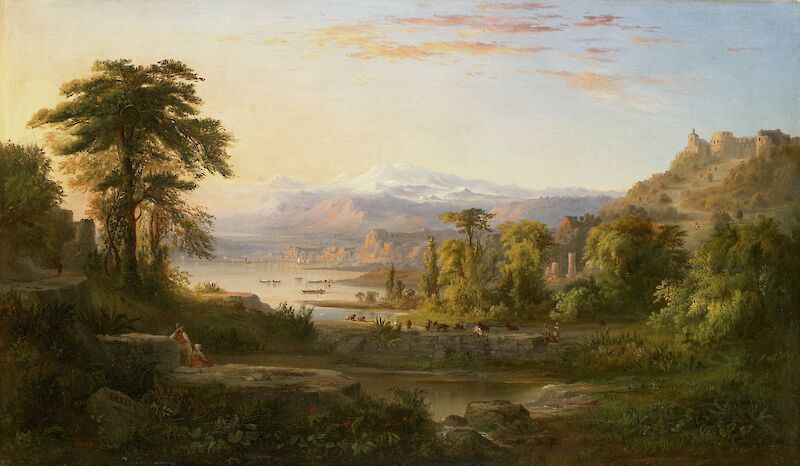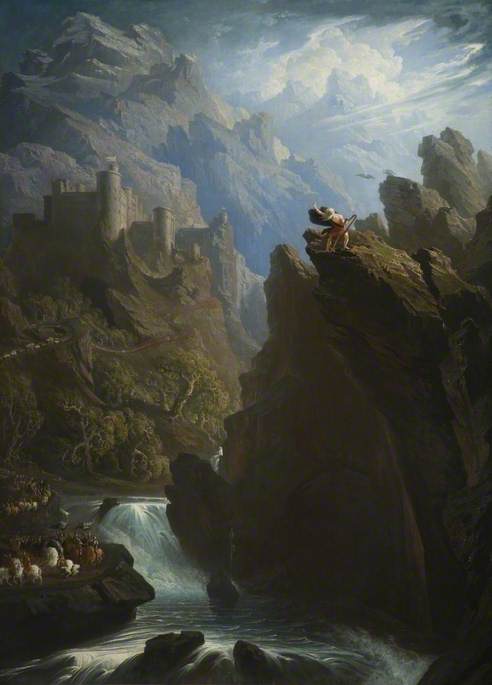

21st Nov 2015.The sublime in literature (and art in general) is a fascinating but complex concept. “The Physiological Sublime: Burke’s Critique of Reason.” Journal of the History of Ideas. Vol.

A Philosophical Enquiry into the Origin of the Sublime and the Beautiful. The sublime is in essence what has the power to both compel and destroy us and art of the Romantic period reflects this notion with a clarity rarely found today.īurke, Edmund. The art of the period renders the sublime in varying manners but the underlying thread uniting all of the pieces is the emphasis on terror and pain as the bringers of the sublime. The Great Day of His Wrath, John Martin (1851-53). It is also worthy to note that the powerlessness of the people in each of the respective paintings is indicative of the discourse concerning the psychological effect of the sublime on the subject during the period and the criticism of the concept of the sublime on man.’The sublime robs us of our freedom: it is a “power and irresistible violence” that does not persuade, but “reign supreme over every hearer” (I).8’ (Ryan 267). The terror of the people as apparent as it is in The Deluge by Francis Danby and the great chasm of cataclysm in John Martin’s His Great Day of Wrath can be viewed as sublime as ‘Whatever is fitted in any sort to excite the ideas of pain and danger that is to say, whatever is in …or operates in a manner analogous to terrour is a source of the sublime.'(Burke I). The great visual dimensions in their works and the use of light and darkness is a rather visceral Burkean example of the sublime within the world of art. The work of painters such as John Martin and Francis Danby with their epic biblical pieces are the most ‘terror’ inducing and ‘awe’ inspiring to the senses. The apocalyptic sublime within art is perhaps the most astonishing to use the term in the most Burkean of senses. The effects of the sublime and its transcendental motifs are central to the philosophical focus of the time as evidenced by many of the artistic works. Nature is the primary source of the sublime during this period and the Burkean question of the sublime, whether it eliminates our sense of self or heightens our sense of identity is an underlying concept of the art and the discourse on the subject during this period. The subject is in awe, astonished, and therefore this is sublime. The image is evocative as the ‘Wanderer’ stands upon a precipice overlooking a sea of clouds.

The perhaps most definitive painting of the sublime and the Romantic period itself, the famous Wanderer above the Sea of Fog by Caspar David Friedrich encapsulates the ‘insensate nature’ focus of the period in relation to the sublimity of nature, and the power nature has wrought upon the subject of man. The sublime for Burke is related to both awe and terror and these two forms of the sublime are showcased in the art of the period through the power of nature upon the subject. Wanderer above the Sea of Fog, Caspar David Friedrich (1818). In the Post-Burkean era discussion upon sublimity within European culture was at its most profound, but it was the relation of the experience to inner our being and the emotive responses that ensued which, warranted the most examination.

Sublime art how to#
Many artists during this period grappled with the definition of the sublime and how to convey it through their medium. The concept of the sublime became a popular trope of art during the Romantic period and subsequent eras as much of the eighteenth century discourse on the topic was concerned with the sublimity experience on the self. Outlining clear definitions of both the sublime and the beautiful and utilizing a pseudo-scientific prose he illustrates how the physically pleasing beautiful and the shocking, terrifying sublime effect the human psyche and body. The Anglo-Irish philosopher and political theorist gained widespread attention during the Romantic period with his now famous A Philosophical Enquiry into the Origin of Our Ideas of the Sublime and Beautiful (1757). It has also lead to an interest I have in the the sublimity of art and the latent philosophy behind many of its famous works. The sublime has been introduced and explained in varying terms over the past two centuries but the most notorious of these was the treatise of Edmund Burke. Studying the works of many Romantic period authors and philosophical theorists these past few weeks has led me to a greater appreciation of the aesthetic sublime in the art, literature and the culture during the height of its discourse.


 0 kommentar(er)
0 kommentar(er)
